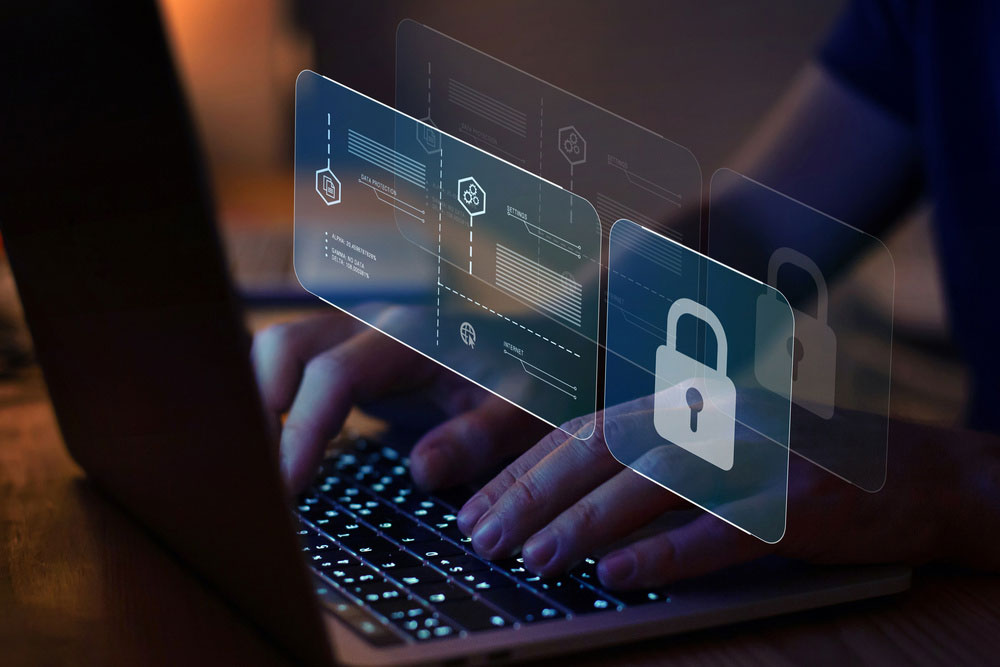Why Cybersecurity Is A Must In Product Design
As technology advances, so do the ways in which people take advantage of it for malicious purposes. Since cybersecurity safeguards both consumers and businesses against online threats, it’s becoming a more crucial factor in designing products.
Hence, it’s essential to understand what cybersecurity is and why you must incorporate it into your product design. Read on to learn more.
What Is Cybersecurity?
Cybersecurity, also known as information security, protects electronic information by reducing risks and vulnerabilities. Security threats can include unauthorized access, use, disclosure, interception, and destruction of data. Data can consist of the confidential information of businesses or individual users. Cybersecurity encompasses the entire process of protecting electronic information that includes:
- Prevention
- Detection
- Response to information security threats
In product design, cybersecurity is a process that begins with identifying potential threats to the product and its users. Once potential threats have been identified, security measures can be implemented to mitigate them. Security measures can include things like:
- Encrypting data
- Using secure authentication methods
- Creating backup of data
Cybersecurity is essential in any product design because even a small security breach can have major consequences. The need for cybersecurity in product design is more critical than ever as the world becomes increasingly digital. With the sensitive data often stored on devices and in systems, it’s essential to take measures to protect it from unauthorized access.
Cybersecurity can be complex, but taking the time to implement proper security measures can help to keep your product and its users safe.
Why You Need Cybersecurity For Your Product Design
In addition to the ones already stated, here are some of the other justifications that make cybersecurity essential for product design:
1. It Prevents Your Product From Being Hacked
An integral aspect of product design is ensuring your product is secure from hackers. With the rise of the internet of things (IoT), more and more products are being connected to the internet, which means they are vulnerable to attack. By incorporating cybersecurity into your product design, you can help to protect your product from being hacked and ensure that it is safe for use.
To do this, you may need to engage a product design firm like the ones specializing in cyber security services in Sacramento. This step is critical because your product will likely contain sensitive data, and your product will need to be able to resist attacks from both external and internal threats. By working with a firm that specializes in cybersecurity, you can be sure that your product will be designed with security in mind from the start.
2. It Protects Your Customers’ Data
As companies acquire more data about their customers, designing products with cybersecurity in mind is more important than ever. By incorporating cybersecurity early in the product design process, companies can ensure that their customer data is protected. Computer security.
The following are types of data that mut be secured in every product design:
- Personally Identifiable Information (PII) or those that traces a person’s identity by itself
- Personal Information (PI) or those that relate to and describes an individual or household
- Sensitive Personal Information (SPI) or those that can cause direct harm to an individual if publicized
- Non-public Personal Information (NPI) or those sensitive data that include financial transactions
You may try incorporating cybersecurity into your product design by doing the following:
- Design products with built-in security features, such as data encryption and authentication.
- Design products that are easy to update and patch to fix security vulnerabilities quickly.
Consulting these challenges with managed IT services is another option that might help mitigate security risks in your product development.

3. It Helps You Comply With Industry Regulations
Depending on the product you’re designing, you might have to adhere to certain industry-specific cybersecurity regulations. For example, the Payment Card Industry Data Security Standard (PCI DSS) and compliance guide apply to anyone who stores, processes, or transmits credit card data.
Product designers need to consider industry-specific compliance and regulations in instances like this, which may require built-in security features, which could include adding features like:
- Encryption
- Two-factor authentication
- Biometrics
In doing so, you help your company avoid becoming the next statistic in a data breach and getting penalties and fines that can cripple your business.
4. It Protects Your Company’s Reputation & Builds Trust
As mentioned, ignoring the digital security of your product may cause cybercriminals to exploit vulnerabilities to steal data or money. By ensuring that your product is designed with cybersecurity in mind, you can help protect your company’s reputation.
In the wake of high-profile cyberattacks, many consumers are now more aware of the importance of cybersecurity. A 2021 study by Norton found that more than 50% of adult users are becoming anxious about being cybercrime victims.
As a product designer, you play a crucial role in protecting not just your users’ data but their peace of mind. By incorporating cybersecurity into your product design, you can help build consumer trust and confidence in your product.
5. It Safeguards Your Bottom Line
Finally, integrating cybersecurity into your product design is not only good for your customers and your company, but it’s also good for your bottom line. Companies that invest in cybersecurity tend to see a return on their investment.
Although it may seem like an expense to have cybersecurity in place, it can actually help you to save money and resources in the long run. Security measures can avoid costly breaches and downtime, which can eat into your profits.
According to a study, security breaches cost skyrocketed up to $4.35USD million in 2022. This number is a 2.6% increase from the $2.24USD million it cost in 2021. The study also found that the average cost of a data breach is $1USD million.
With the increasing cost of data breaches, companies need to invest in cybersecurity for their product design.
Types Of Cyberattacks
There are various types of cyberattacks, but some of the most common ones include the following:
- Malware: A malicious code or software that can infect a system and cause damage.
- Phishing: A social engineering attack that employs fraudulent emails or websites to deceive users into disclosing critical information, such as credit card numbers, personal identification numbers (PINs), and passwords.
- Denial of Service (DoS) Attacks: These are designed to overload a system and prevent legitimate users from accessing it.
- Distributed Denial of Service (DDoS) Attacks: It’s a larger-scale DoS attacks that target servers, websites or networks and are usually carried out by botnets (networks of infected computers that can be controlled remotely).
- Ransomware: A malware that encrypts a victim’s data and demands a ransom to decrypt it.
- Data Breaches: These occur when an attacker gains unauthorized access to sensitive data, often through a network or database.
Cybersecurity: More Than Just An IT Issue
In today’s interconnected world, product designers need to consider cybersecurity at every stage of the design process. Cybersecurity is not just an IT issue anymore—it has become a business issue. A breach can have a devastating impact on a company’s reputation and bottom line.
Product designers need to consider the security of the data that their products will be storing and transmitting. And they need to design products that are easy to use and manage so that security controls are not bypassed.
Cybersecurity is a complex issue, but there are a few simple steps that product designers can take to help mitigate the risks:
- Understand the threats: Be updated with the latest news on cyber threats and understand the types of attacks to help you design more secure products.
- Identify your weaknesses: Take a good look at your product design and work out where the weak points are. These are the areas that need to be addressed from a security perspective.
- Design for security: When designing your product, factor in security from the start. This will make it much easier to integrate security features and make your product more secure overall.
- Test, test, test: Before launching your product, test it thoroughly for security vulnerabilities. Use both automated and manual testing methods to be as thorough as possible.
Key Takeaways:
- Cyberattacks are becoming more common and more sophisticated. As devices and services become more connected through the IoT, they become more vulnerable to attack.
- The stakes are getting higher. Hackers are now targeting critical infrastructures, such as power grids and hospitals.
- The cost of a breach is rising. A single data breach can cost a company millions of dollars.
- Given all of this, it’s no wonder product designers are now being asked to consider cybersecurity at every stage of the design process.
- Cybersecurity is not just an IT issue anymore but a business issue that could significantly impact a company’s reputation and bottom line.
- Product designers need to be aware of the latest cybersecurity threats and trends, and they need to design products with security in mind. They also need to work closely with IT and security teams to ensure that the products they develop are as secure as possible.
Final Thoughts
When it comes to product design, cybersecurity is often an afterthought. But cybersecurity is no longer a nice-to-have; it is a necessity that should be built into the design of products from the ground up. That way, it’s not an afterthought or an added feature but an integral part of the product.
With this knowledge and the right approach at hand, product designers can play a key role in helping to protect their companies from the ever-growing threat of cybercrime.

Recent Comments